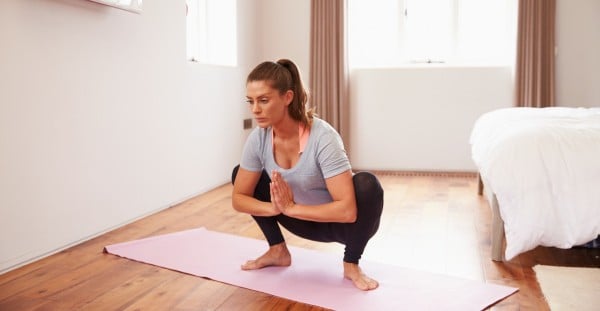
It’s time to sit like a kid again, grown-ups.
Welcome to the squat challenge. Before you run away, this isn’t about doing 10-15 reps or holding weights or working that booty. This is a different kind of squat. The RESTING squat.
Resting. My favourite word.
Picture a child bending down to examine a trail of ants, squatting down with their bum resting on their heels. Or an old man in China or Southeast Asia, squatting comfortably while he eats his dinner. Or a catcher in a baseball game, squatting for long stints behind the home plate.
I would’ve thought this position was bad for your knees or something, because it looks as much. Turns out I was wrong (rare, but true) – it’s actually really good for your joints.
Watch video: The Mamamia team’s most embarrassing gym moments. (Post continues after video.)
In fact, it’s about to become the new fitness craze.
You know how stand-up desks have become a thing? Next up: squat desks. Well, maybe not just yet. But you may see your fit friends posting resting-squat-selfies in the next few months. #squelfie…
So, why?
